Thrift trending: Mbulelo Falutis street-style fashion is acquired from clothing and accessories he buys in places such as the informal markets. (Oupa Nkosi/ M&G)
Mbulelo Faluti is a bright-eyed, baby-faced fashionista from Orlando, Soweto. The 18-year-old self-proclaimed “street-style scholar” takes his looks so seriously, it is the only thing he shares with his 10 000-plus Instagram followers.View this post on Instagram
“Beware of the dog” @converse.za #chuckstories
A post shared by mbulelo faluti (@the_alpha_za) on Feb 7, 2019 at 6:53am PST
Faluti’s fashion is guided by two rules: never repeat “old shit” and never “rock fake shit”. To live according to this gospel, he shops once a fortnight for at least two pairs of pants, three T-shirts and two additional accessories such as belts and caps.
“I don’t shop at the mall,” says Faluti when asked how he, fresh out of high school and without a steady income, can afford this.
Instead, he buys second-hand clothing.
“I wasn’t always like this,” explains Faluti.
“Besides not having the right finances, my biggest issue was not having information. I never knew there was something called thrift.”
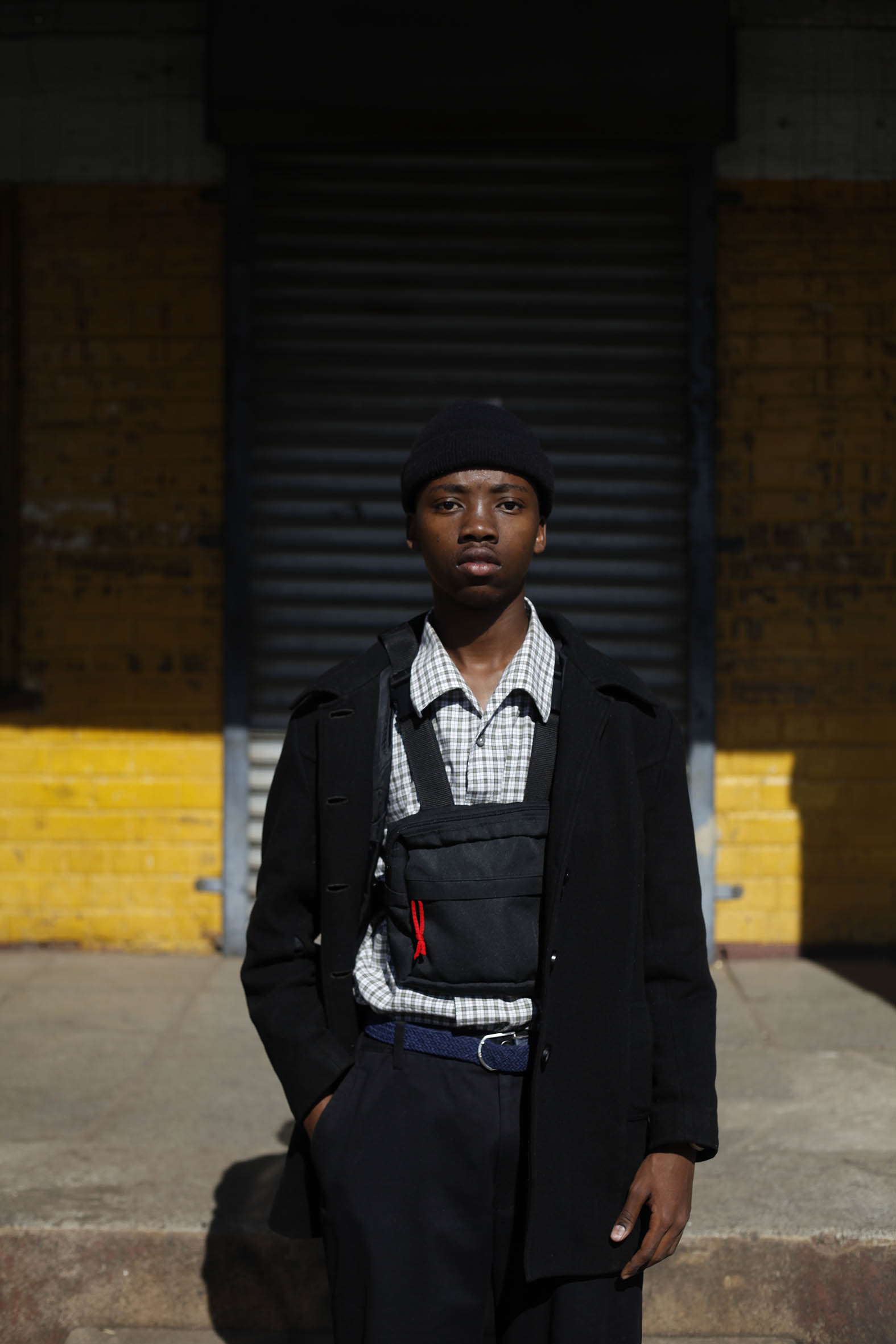
(Oupa Nkosi/ M&G)
He jumped onto the fad when he started being a Braamfontein regular just over a year ago.
“Where I’m from, they look down on ou klere, [old clothes],” Faluti says, because it was linked to poverty and the need to live on clothes “passed down from wealthy white people”.
“So when I first got into that thrift lifestyle, I needed to know where to go. Someone told me that the best spot to do it was Noord [in downtown Jo’burg]. I was so scared of town so I wanted someone to go with me, but people were acting fresh. So I went there by myself and followed my intuition. I wasn’t going to let my fear stop me from working on my fresh drip [style],” Faluti says, gesturing to his Cookie Monster Muppet hat, a gold chain, his mother’s trench coat, corduroy slacks and Nike sneakers.
Faluti is now a regular eDunusa, on the corner of De Villiers and Wanderers streets, near the Noord taxi rank. Described as “sartorial chaos” (“Used clothing industry oils the informal economy, April 14, 2016), the street market gets its name from the isiZulu word that describes customers having to bend over when they look through the large piles of clothing.
What makes eDunusa a retail magnet is the next to nothing prices.
According to a 2015 article inThe Guardian, “Second-hand clothes from an array of developed countries dominate local market stalls in sub-Saharan Africa. Across the African continent second-hand clothes are a mainstay of informal traders, even accounting for the majority of clothing sales in some countries.”
From Britain alone, huge numbers of bales weighing more than 300kg of clothes are brought into the African continent.
The clothes are registered with the South African Revenue Service as donations to be distributed to the impoverished; they are not meant to be sold.
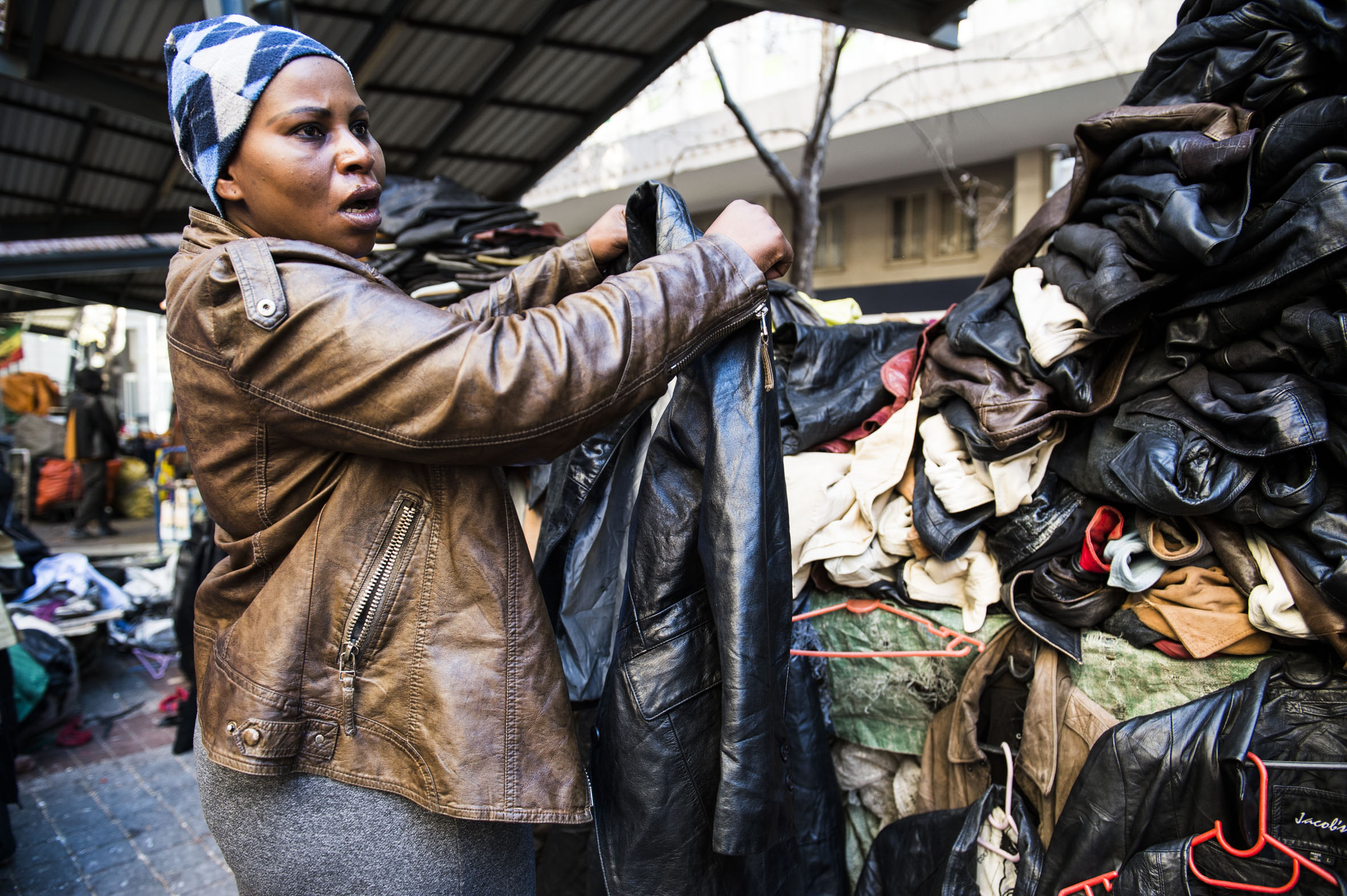
Shoppers can find bargains at Jo’burg’s De Villiers Street and Small Street. (above and below) (Delwyn Verasamy/ M&G)
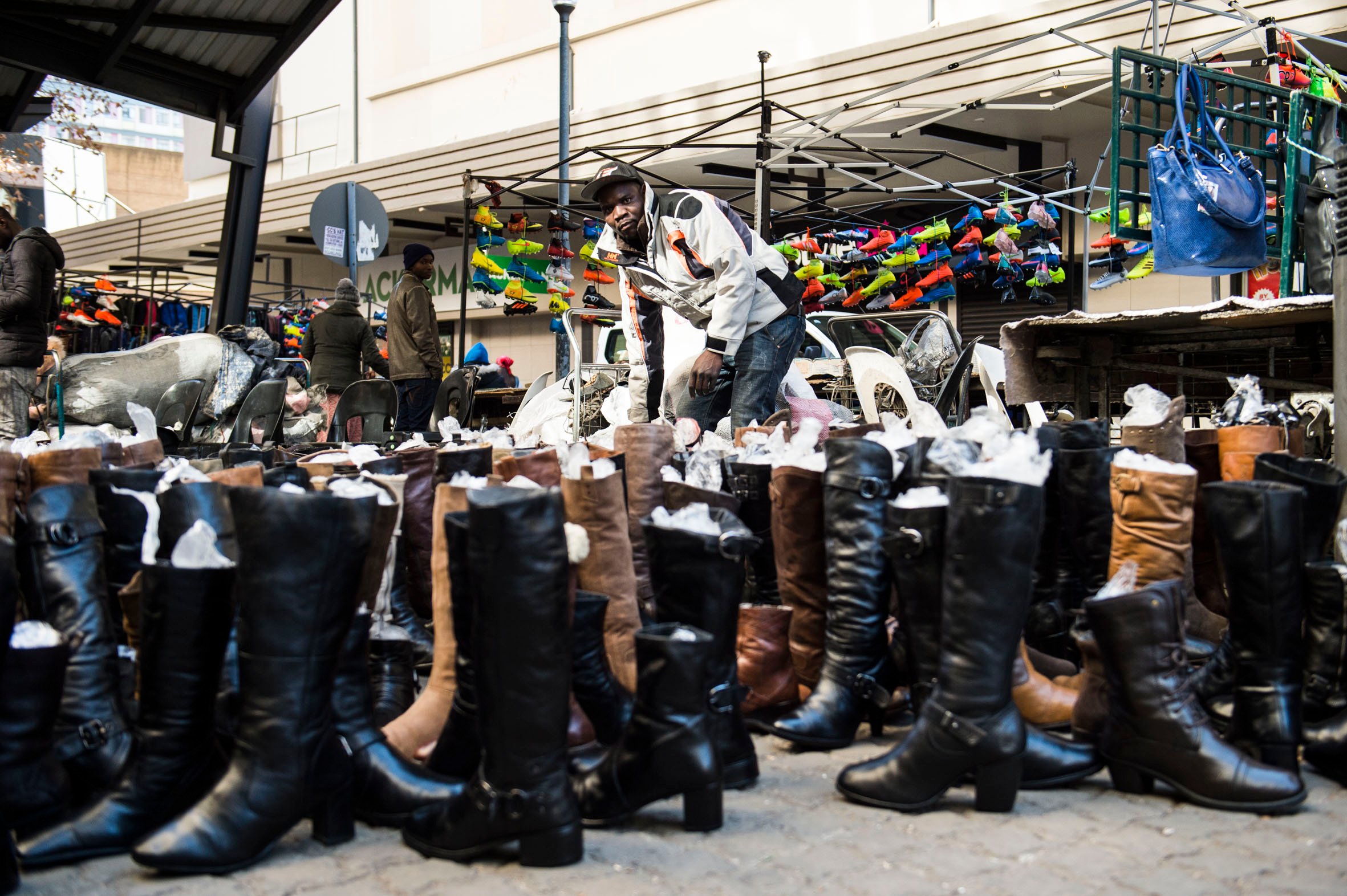
But the street market’s merchants are making a living and supporting their families.
And shoppers like Faluti don’t care for such details. “I like designer. Things like Gucci, Dior and Balenciaga, but I can’t afford it from the mall.”
According to a Forbes analysis by Sanford Stein, the secondhand economy is projected to grow to nearly 1.5 times the size of fast fashion within the next 10 years. (Fast fashion refers to mass market retailers such as Zara and H&M, which rapidly respond to the latest trends and replicate them in large quantities at affordable prices. The industry is accused of exploiting cheap labour in developing countries.)
Going hand in hand with the growth of the second-hand clothing is the trend among fashionistas not to shop for their threads at the mall.
Last year, Business Insider reported on how malls are struggling to fill vacant spaces, largely because rents are too high. To deal with this loss of income, malls are converting excess space into residential or business centres.
Although affordability is a large factor in the decline, other factors fuelling the shift from shopping at the mall include an increased sustainability consciousness.
Social media too plays a role in this shift, encouraging people to cultivate a personal style by shopping online and from local niche brands. View this post on Instagram
Thank you for everything, Riky. I think this is the start of something we were never ready for I very rarely meet people who’s energy I can trust like this. You’re creatively brave and so kind to everyone around you. @rikyrickworld will be wearing limited edition pieces from our collection that we showcased last night at @xperience_afi to the shows at @afi_sa this week. If you spot him give him hugs because this is a special energy right here. #artclubandfriends #rikyrick #xafi
A post shared by Artclub and Friends® (@artclubandfriends) on Apr 11, 2019 at 7:34am PDT
In comparison to the carefully curated and generic experience one finds at the mall, online shopping from either niche local designers or large online retailers such as Superbalist are arguably more efficient. One is more likely to find exactly what they are looking for, in the right size and colour from the comfort of their smart device, wherever they are.
An example of a local niche brand is Artclub & Friends. Founded by Robyn Keyser in Cape Town, it sources local materials and labour to make ethical, environmentally friendly, and gender fluid clothing.
“Brands like AC&F are really trying to make it easier for us to shop better. Having options are important to us as a generation that thrives on individualism,” asserts Nosipho Motsamai, an entrepreneur who collaborates with local brands to advertise them through her social media platform.
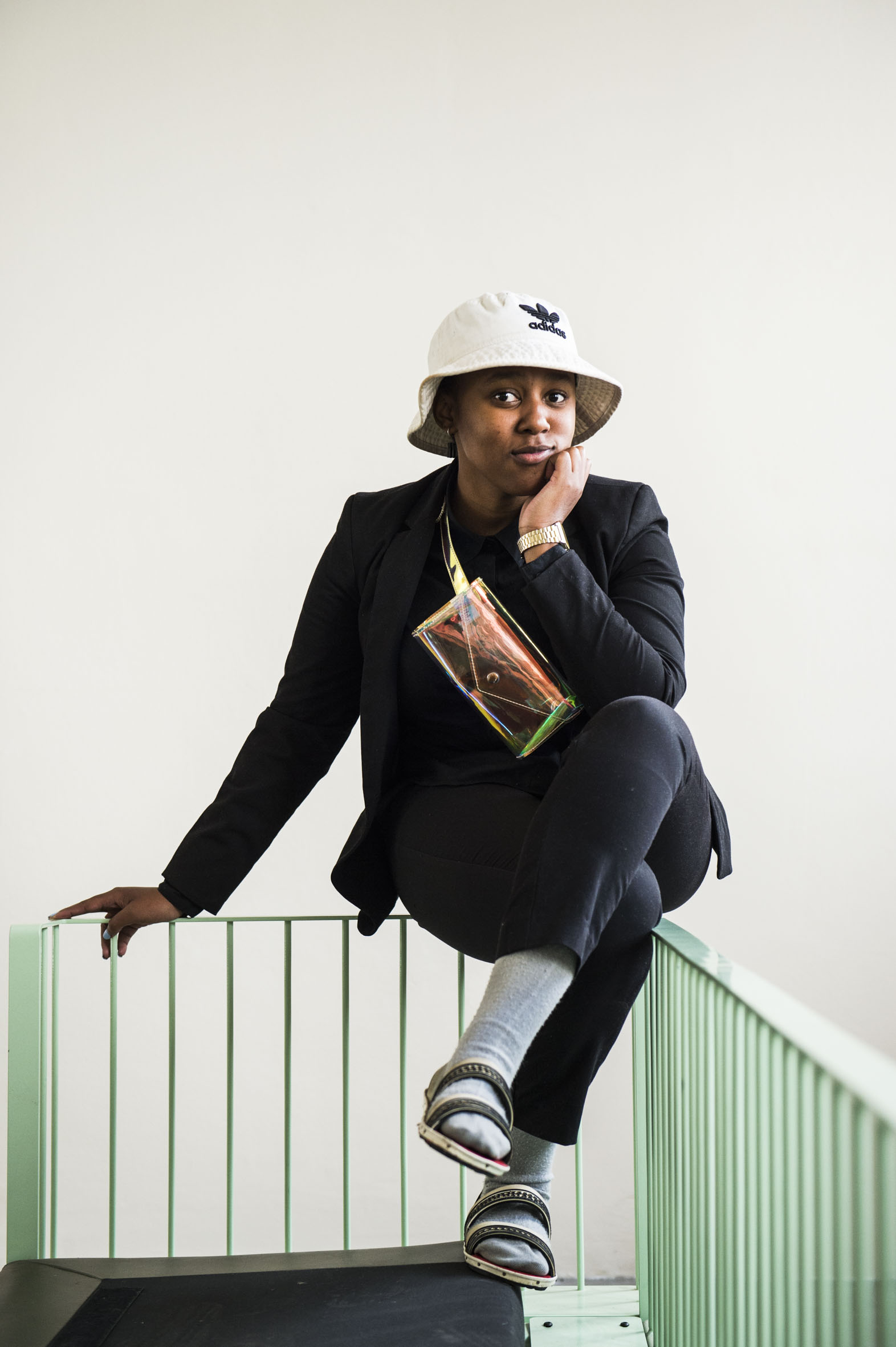
Distinct: Social media entrepreneur Nosipho Mostamai buys local brands because she prefers an individual look. (Delwyn Verasamy)
Shoppers such as Motsamai are happy to pay a little more by ordering from a local person who has started their own T-shirt label or wait a week for deliveries because it isn’t as monotonous as going to the mall.
“[If we all shop at the mall] we’ll all look the same — and I won’t know where my money is going,” she says.
Unlike fast fashion, shopping from niche brands embodies individuality because items are made in small batches that aren’t likely to have a second run.
“I think fashion is such an important means of self-expression that can be a hugely freeing and feminist act,” says Youlendree Appasamy, when asked about her need to be a part of the individualism wave in fashion. “It’s something where you have the control and agency to decide what you want to look like.”
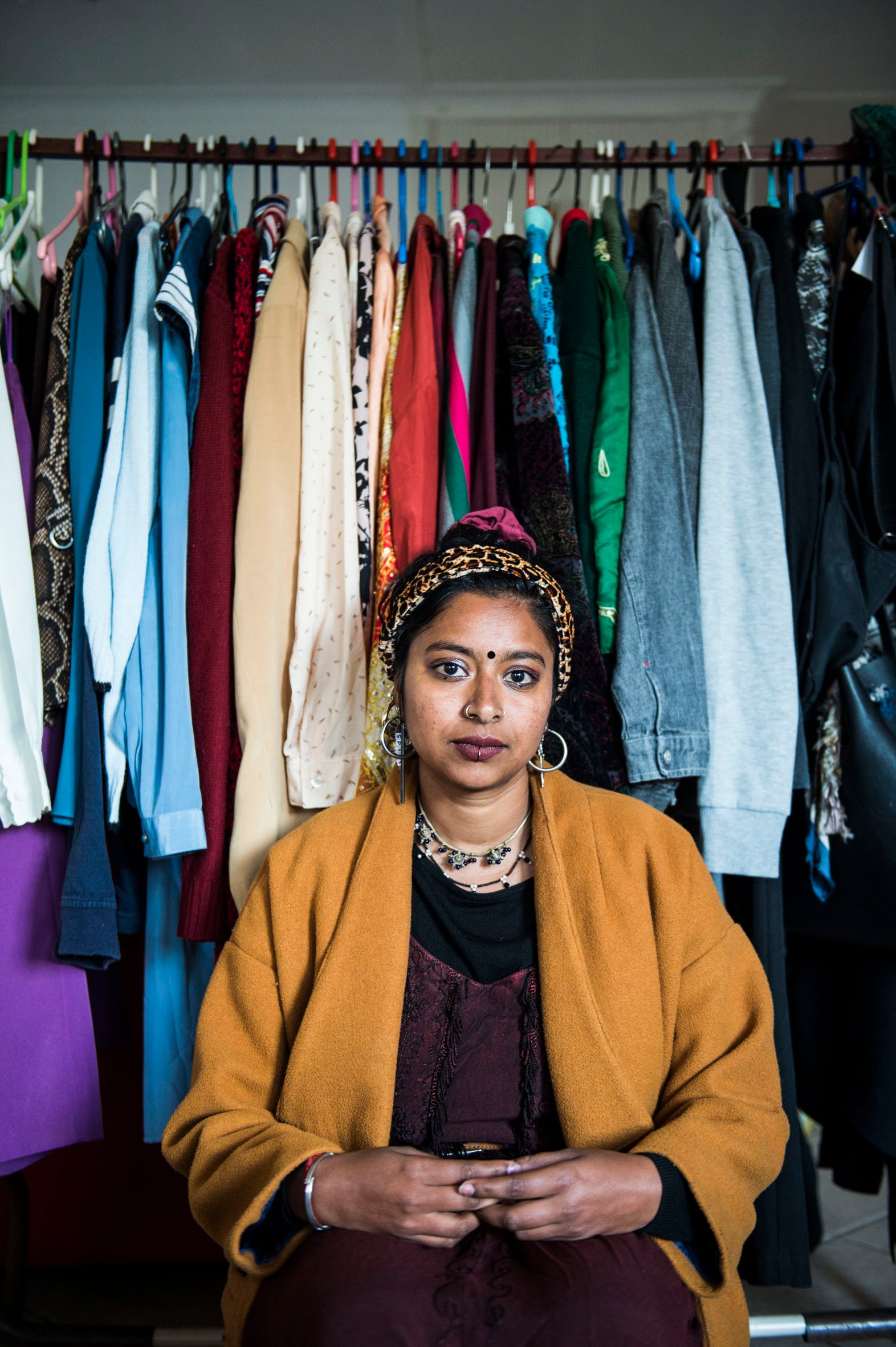
Inventory: Youlendree Appasamy’s boutique sells rare finds through social media (Delwyn Verasamy/ M&G)
In addition to sporting a unicorn look with colourful hair, eccentric makeup and multiple piercings, Appasamy provides a hybrid of thrifting and online shopping by selling second-hand clothes on Instagram through her platform, Lenz Boutique.
Although Faluti, Motsamai and Appasamy spoke highly of alternatives to the mall, they cannot deny its place. It’s where they shop for clothing basics such as underwear.
But as long as fast fashion is more affordable than niche brands and logistically more accessible than shopping online or navigating through the sartorial mounds that make up Dunusa, the likes of H&M, Mr Price, Zara, The Fix and Cotton On will continue to have a reason to keep their doors open.